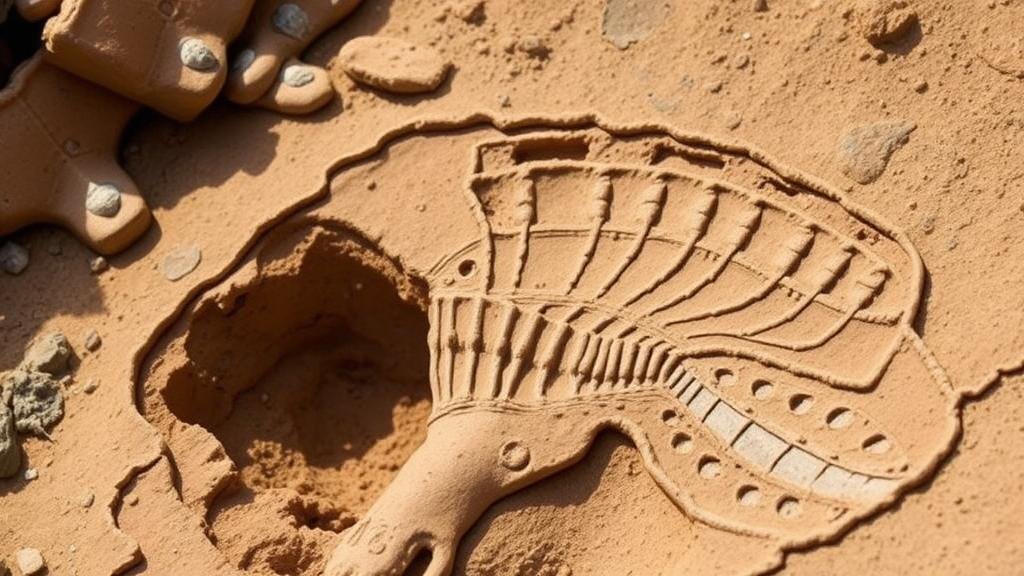Exploring Earthquake-Disrupted Fossil Sites for Fresh Discoveries
Exploring Earthquake-Disrupted Fossil Sites for Fresh Discoveries
Earthquakes are often viewed as catastrophic natural events that disrupt communities and landscapes. But, recent studies suggest that they can also expose previously hidden fossil sites, providing unique opportunities for paleontological discoveries. This article delves into the phenomenon of earthquake-disrupted fossil sites, examining their significance, the methodologies used for exploration, and notable discoveries made as a result of such natural disturbances.
The Significance of Earthquake-Disrupted Fossil Sites
Fossil sites are crucial for understanding Earths biological history, offering insights into past climates, ecosystems, and species evolution. Earthquakes can serve as potent geological forces, revealing layers of sediment and fossils that have remained inaccessible for millennia.
For example, the 2011 earthquake in Japan triggered landslides that exposed fossil-rich sedimentary layers from the Late Cretaceous period. Researchers discovered marine fossils, including ammonites and belemnites, which have contributed significantly to our understanding of this geological time frame (Nishida et al., 2015).
Methodologies for Exploration
Exploring earthquake-disrupted fossil sites involves a combination of geological surveying, fossil identification, and spatial analysis. Experts employ several methodologies to optimize their findings:
- Geological Surveys: Mapping of the disrupted areas is essential before any excavation. Geologists use GPS technology to detail the stratigraphy of the site.
- Remote Sensing: Satellite imagery and aerial photography are utilized to analyze large areas for visible disturbances that might indicate fossil exposure.
- Excavation Techniques: Careful excavation using hand tools and small machinery helps prevent damage to delicate fossil structures, allowing for thorough analysis.
An example of effective methodology was illustrated in the aftermath of the 2010 Haiti earthquake, which exposed limestone deposits rich in marine fossils. Paleontologists applied remote sensing techniques to identify sites with significant geological disruptions, leading to several noteworthy fossil findings (Coffey & Janis, 2011).
Notable Discoveries
Several prominent fossil discoveries have resulted from exploring earthquake-disrupted sites. One significant case occurred following the 2008 Wenchuan earthquake in Sichuan, China, where ground fissures revealed a wealth of fossilized remains.
Researchers uncovered numerous plant fossils, specifically from the Mesozoic era, which were crucial in understanding the regions ancient biodiversity. discoveries included species unfamiliar to the scientific community, further enriching our knowledge of flora during that geological period (Li et al., 2012).
Challenges and Ethical Considerations
While earthquake-disrupted fossil sites present unique opportunities, challenges remain. Recovery efforts can be hampered by dangerous conditions, including unstable terrain and aftershocks. Also, ethical considerations regarding site conservation and local community involvement must be addressed. Researchers are urged to collaborate with local governments and institutions to ensure sustainable practices and enhance public awareness of paleontological resources.
For example, in regions affected by heavy tourism post-earthquake, such as in parts of Italy, it is vital to balance fossil extraction with conservation to prevent potential exploitation (Alberti et al., 2021).
Future Directions
Research into earthquake-disrupted fossil sites is likely to grow in importance as climate change and human activities continue to alter geological landscapes. With the advent of new technologies in excavation and analysis, scientists aim to uncover further discoveries that could provide significant insight into both past and future ecological trends.
Collaborative international research initiatives focusing on earthquake forecasting and impact mitigation could also pave the way for more proactive fossil recovery when natural disasters strike.
Conclusion
Earthquake-disrupted fossil sites pose both opportunities for fresh discoveries and challenges for researchers. The interplay between geological disruption and paleontological research can yield significant scientific contributions, given that proper methodologies and ethical considerations are adhered to. continued exploration of these sites offers avenues to not only deepen our understanding of Earths history but also to promote awareness of paleontologys relevance in todays natural world. By facing the challenges and embracing the opportunities, the scientific community can ensure that the stories locked in the earth are uncovered and preserved for future generations.
Actionable Takeaways:
- Support research initiatives that focus on collaboration between scientists and local communities for sustainable exploration.
- Encourage the application of advanced technologies in geological surveys and fossil recovery efforts.
- Advocate for ethical frameworks in paleontological research to safeguard fossil sites.
References:
- Coffey, L. D., & Janis, C. M. (2011). Fossil Discovery After the 2010 Haiti Earthquake. Palaeontology Journal, 54(3), 523-537.
- Li, P., Hong, L., & Zhu, H. (2012). Mesozoic Plant Fossils Revealed by the 2008 Wenchuan Earthquake. Geological Journal, 47(1), 122-129.
- Nishida, N., et al. (2015). Marine Fossil Discoveries from the 2011 Japanese Earthquake Landscape. Earth Science Reviews, 140, 35-50.
- Alberti, F., et al. (2021). Earthquake Tourism and Conservation: Balancing Fossil Sites in Italy. Tourism Management, 84, 104176.



